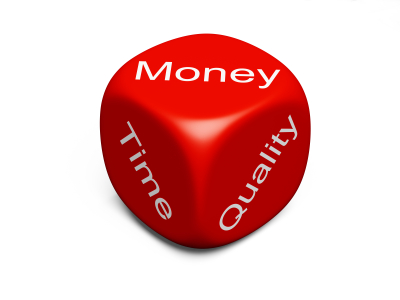
by Fronetics | Feb 25, 2015 | Blog, Content Marketing, Marketing, Social Media, Strategy

Answering the invariable question: “How often should I blog?”
“How often should I blog?” is a question we often get asked. The simple answer is: as often as possible so long as each post is valuable and as long as the quality doesn’t slip. Most people don’t like this response and push for something more tangible.
Research shows that blogging more frequently gets results
Research conducted by HubSpot found that companies with 51-100 pages on their website generate 48% more traffic than those with 1-50 pages. If you blog regularly your business could reach that 51 page threshold in less than one year.
HubSpot also found that companies who publish at least 15 blog posts per month get 5 times more traffic than those companies who don’t blog. Think this stat applies to big businesses? HubSpot found that small businesses with between 1 and 10 employees see the largest gains by posting more often.
Another reason to publish more often than less often: companies nearly double their sales leads by increasing blogging frequency from 3-5 times per month to 6-8 times per month.
Evidence shows that blogging more frequently gets results
At Fronetics we have seen these results first hand. To improve ranking, drive traffic, and increase leads we suggested that a client increase the number of blog posts published each week. The client was skeptical that increasing the blogging frequency would make a difference, especially to a company within the supply chain industry; however, they decided to give it a try. Within one month traffic increased by 23%, sales leads doubled, and the client landed a new customer.
Try increasing your blogging frequency for one month. Track your KPIs and assess whether increasing the blogging frequency is right for your business.
No matter how often you publish blog content make sure that your content retains these three elements:
- Consistent
- Quality
- Valuable
Fronetics Strategic Advisors is a management consulting firm focused on inbound marketing and strategy. We create and execute results-oriented programs for growth and value creation. Unlike other firms, our approach is data driven. We know ROI is important, so we track and measure results to drive success.


by Fronetics | Feb 25, 2015 | Blog, Content Marketing, Marketing, Social Media, Strategy

Answering the invariable question: “How often should I blog?”
“How often should I blog?” is a question we often get asked. The simple answer is: as often as possible so long as each post is valuable and as long as the quality doesn’t slip. Most people don’t like this response and push for something more tangible.
Research shows that blogging more frequently gets results
Research conducted by HubSpot found that companies with 51-100 pages on their website generate 48% more traffic than those with 1-50 pages. If you blog regularly your business could reach that 51 page threshold in less than one year.
HubSpot also found that companies who publish at least 15 blog posts per month get 5 times more traffic than those companies who don’t blog. Think this stat applies to big businesses? HubSpot found that small businesses with between 1 and 10 employees see the largest gains by posting more often.
Another reason to publish more often than less often: companies nearly double their sales leads by increasing blogging frequency from 3-5 times per month to 6-8 times per month.
Evidence shows that blogging more frequently gets results
At Fronetics we have seen these results first hand. To improve ranking, drive traffic, and increase leads we suggested that a client increase the number of blog posts published each week. The client was skeptical that increasing the blogging frequency would make a difference, especially to a company within the supply chain industry; however, they decided to give it a try. Within one month traffic increased by 23%, sales leads doubled, and the client landed a new customer.
Try increasing your blogging frequency for one month. Track your KPIs and assess whether increasing the blogging frequency is right for your business.
No matter how often you publish blog content make sure that your content retains these three elements:
- Consistent
- Quality
- Valuable
Fronetics Strategic Advisors is a management consulting firm focused on inbound marketing and strategy. We create and execute results-oriented programs for growth and value creation. Unlike other firms, our approach is data driven. We know ROI is important, so we track and measure results to drive success.


by Fronetics | Feb 23, 2015 | Blog, Content Marketing, Data/Analytics, Marketing, Strategy

Measuring blogging ROI is crucial to your overall marketing success.
Just as with outbound marketing activities, your company’s inbound marketing efforts should be given the same attention when it comes to Return on Investment (ROI) analysis. In fact, companies who measure inbound marketing ROI are more than 12 times more likely to generate better year-over-year returns. And with blogging being reported as the number one method for increasing website traffic, it should stand to reason that calculating ROI for your blogging efforts is crucial to your overall inbound marketing success.
Calculating ROI for blogging activities isn’t as straightforward as say, ROI from click-to-conversion, but its achievements can be measured in other ways. Consider employing a blend of these four categories to measure the effectiveness of your blogging efforts.
Audience and Content Reach
According to a 2013 HubSpot report, 85% of marketers reported increased web traffic within seven months of beginning inbound marketing activities. While it’s true that building a successful blog can take some time, there are things you can do (and measure) to speed its maturity. Encourage engagement and reach by crafting relevant and interesting content for your audience. This increases the likelihood your content is shared and commented on by your readers.
Track this: Beyond noting any increases in web traffic, track both your average cost per view and the number of comments and social shares your blog content receives.
Lead Generation
Tying revenue directly to publishing and distributing blog content can be difficult. Thinking about blogging activities within the context of your entire sales funnel can make it easier to determine effectiveness. As blog content is typically used to attract leads, encourage readers to subscribe to your blog or submit contact info to get higher-value content. Continued engagement nurtures leads and moves them further down the sales funnel.
Track this: The cost to get a lead. You can then determine the percentage of leads that move on to become qualified leads, the percentage of qualified leads that then become opportunities, and the percentage of opportunities that are ultimately won. At the end of the day, you’ll be able to calculate the revenue generated from leads that entered the funnel from blog content.
Intangibles
What are you gaining from networking with industry peers? Has your blog played a role in developing and nurturing professional relationships? Could you consider your blogging activities as part of your professional development? Blogging provides benefits outside of traditional marketing ROI measurements. Time spent researching, networking, writing, and engaging with others in your industry should certainly be considered when determining overall usefulness of blogging.
Track this: Sales cycle times. Staying current with industry trends and building a reputation as the go-to industry expert can be reflected in the type of customers and clients you are attracting. Are you attracting more high-quality leads and closing more ideal customers? Thank your blogging activity.
Cost of Customer Acquisition (CoCA)
By understanding how much it costs your business to acquire a new customer, you gain valuable insight into how much your business should be investing on blogging activities.
Track this: Calculate your (CoCA) by dividing your cost to blog by the number of visits the blog. For example, let’s say your company spent $500 on writing a blog post and 100 people visited your site. Your Cost of Visitor Acquisition will be $5 ($500 divided by 100). If 5% of those blog visitors convert into a lead then your Cost of Lead Acquisition (CoA) is $100 ($500 divided by 5 customers). If 10% of those leads actually buy something from you, your final Cost of Customer Acquisition is $50. Investing in one blog post will yield one new customer for every $50 you invest.
While it can feel a little unwieldy to measure ROI from blogging activities, keeping a strong focus on blogging goals and objectives will help to lend weight to metrics that will ultimately matter the most to you and your business. What measures does your company use to measure ROI for blogging?

by Fronetics | Feb 23, 2015 | Blog, Content Marketing, Data/Analytics, Marketing, Strategy

Measuring blogging ROI is crucial to your overall marketing success.
Just as with outbound marketing activities, your company’s inbound marketing efforts should be given the same attention when it comes to Return on Investment (ROI) analysis. In fact, companies who measure inbound marketing ROI are more than 12 times more likely to generate better year-over-year returns. And with blogging being reported as the number one method for increasing website traffic, it should stand to reason that calculating ROI for your blogging efforts is crucial to your overall inbound marketing success.
Calculating ROI for blogging activities isn’t as straightforward as say, ROI from click-to-conversion, but its achievements can be measured in other ways. Consider employing a blend of these four categories to measure the effectiveness of your blogging efforts.
Audience and Content Reach
According to a 2013 HubSpot report, 85% of marketers reported increased web traffic within seven months of beginning inbound marketing activities. While it’s true that building a successful blog can take some time, there are things you can do (and measure) to speed its maturity. Encourage engagement and reach by crafting relevant and interesting content for your audience. This increases the likelihood your content is shared and commented on by your readers.
Track this: Beyond noting any increases in web traffic, track both your average cost per view and the number of comments and social shares your blog content receives.
Lead Generation
Tying revenue directly to publishing and distributing blog content can be difficult. Thinking about blogging activities within the context of your entire sales funnel can make it easier to determine effectiveness. As blog content is typically used to attract leads, encourage readers to subscribe to your blog or submit contact info to get higher-value content. Continued engagement nurtures leads and moves them further down the sales funnel.
Track this: The cost to get a lead. You can then determine the percentage of leads that move on to become qualified leads, the percentage of qualified leads that then become opportunities, and the percentage of opportunities that are ultimately won. At the end of the day, you’ll be able to calculate the revenue generated from leads that entered the funnel from blog content.
Intangibles
What are you gaining from networking with industry peers? Has your blog played a role in developing and nurturing professional relationships? Could you consider your blogging activities as part of your professional development? Blogging provides benefits outside of traditional marketing ROI measurements. Time spent researching, networking, writing, and engaging with others in your industry should certainly be considered when determining overall usefulness of blogging.
Track this: Sales cycle times. Staying current with industry trends and building a reputation as the go-to industry expert can be reflected in the type of customers and clients you are attracting. Are you attracting more high-quality leads and closing more ideal customers? Thank your blogging activity.
Cost of Customer Acquisition (CoCA)
By understanding how much it costs your business to acquire a new customer, you gain valuable insight into how much your business should be investing on blogging activities.
Track this: Calculate your (CoCA) by dividing your cost to blog by the number of visits the blog. For example, let’s say your company spent $500 on writing a blog post and 100 people visited your site. Your Cost of Visitor Acquisition will be $5 ($500 divided by 100). If 5% of those blog visitors convert into a lead then your Cost of Lead Acquisition (CoA) is $100 ($500 divided by 5 customers). If 10% of those leads actually buy something from you, your final Cost of Customer Acquisition is $50. Investing in one blog post will yield one new customer for every $50 you invest.
While it can feel a little unwieldy to measure ROI from blogging activities, keeping a strong focus on blogging goals and objectives will help to lend weight to metrics that will ultimately matter the most to you and your business. What measures does your company use to measure ROI for blogging?

by Fronetics | Feb 12, 2015 | Blog, Content Marketing, Marketing, Strategy

7 steps to a blogging strategy for your business.
Blogging has proved to be a successful marketing strategy for many companies. In fact, a full 82 percent of companies who blog daily day have acquired a customer from their blog. Freight logistics company Cerasis acquired 98 new customers by leveraging their blog and digital strategy.
What does it take to attract prospects and acquire customers? Strategy. A 2014 study of B2B marketers found that companies who have a documented content strategy in place are more likely to consider their efforts to be effective than companies who do not have a documented strategy in place (60 percent vs. 11 percent).
Here are 7 steps to follow to develop a blogging strategy for your business.
1. Understand the ‘Why’.
The first step in the development of your blogging strategy will serve as the foundation for all remaining elements. Defining the purpose of your blogging activities and communicating them to your team will create a clear path to successful implementation. Understanding the purpose of your blogging activities means being able to answer two important questions: Why has your company decided to blog? What is it hoping to gain? Setting the strategy for your blog starts with understanding the reasons and motivations for prioritizing blogging as a marketing strategy.
2. Let your ideal customers define content.
Content will be the backbone of your blogging operation. Since you are likely targeting ideal customers with this content in order to convert them to leads, it stands to reason that you should look to them for content inspiration. Building out hypothetical profiles of your ideal customers will allow you to answer important questions such as their pain points, challenges, demographics, and job duties. Use what you know about the buying and researching behaviors of your ideal customers to craft relevant and interesting content they’d likely be searching for. Above all, publish nothing less than your most quality content. Part of building your reputation as a trusted industry thought leader is setting – and continuing – to meet expectations. You’re better off missing one day of a blog post than phoning in something that has the potential to undermine the credibility of your company.
Keywords signal to search engines when there’s a match between your content and the search term of a user. Similar to crafting content with your ideal customer in mind, keywords should be tailored to phrases your ideal customers use to research and buy. Determine which keywords you’ll be targeting and then draft a list of 5-10 keywords and associated long-tail keywords you will include in blog content.
4. Identify content distribution activities and platforms for promotion.
Once you’ve determined strategy for content creation and optimization, it’s time to make a plan to get your quality content in front of potential customers. It’s not enough to just post and pray that you’ll be found – you should actively distribute and promote blog content. Fortunately, the proliferation of social media has made it easier for companies to reach their target audiences, but not without competition. Reusing blog posts and repackaging content in different forms – such as infographics, summary tweets, & photos – will help break through the noise of competitors.
5. Assign responsibility.
Decide what your day-to-day blogging operations will look like. Who will be accountable for each function of your blogging strategy? The size and resource availability of your organization is likely to determine how centralized blogging responsibilities will be. When thinking about responsibilities, consider tasks beyond just writing posts; responsibility for tasks such as publishing and promoting content, drafting an editorial calendar, and analyzing data will all need to be assigned.
6. Maintain an editorial calendar.
Analogous to a roadmap, an editorial calendar will guide your blogging activities and give you a big picture look at where you’re headed and how you’re getting there. It also serves to hold those with blog-related responsibilities accountable to a publishing schedule. And while it’s true that the frequency of blog posts can be linked to an increase in website traffic, stepping outside of what you can reasonably commit to is a recipe for disaster.
Use your editorial calendar to set the number of blog posts you’ll publish each week to ensure posts are published with consistency and regularity. That not only establishes routine for your team, but also for your readers. Get started now with this template for creating your own editorial calendar.
7. Measure, analyze, adapt, and repeat.
Determine what your blogging success will look like and use relevant tools to regularly track and monitor metrics. Include metrics from all platforms of distribution, not just website page views or traffic. Think in terms of retweets, follows, likes, and subscribers. Set, review, and revisit goals consistently. Modify approaches that aren’t working. This on-going analysis keeps blogging efforts nimble, which is particularly helpful when outside factors make changes in blogging objectives necessary.
Develop and implement a well-thought-out blogging strategy. Using quality blog content to find, connect, and engage potential customers online can quickly become your powerhouse marketing activity.
Interested in learning more about how your business can develop a winning blogging strategy? We can help. We are a consulting firm focused on inbound marketing and strategy.





